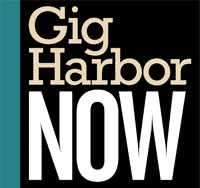Arts & Entertainment Community Government
City council sends Cultural Access sales tax to voters
Gig Harbor’s culture, arts, science, and heritage organizations got one step closer to a financial boost after the Gig Harbor City Council voted unanimously at its July 28 meeting to put a cultural access tax on November’s ballot.
The tax is meant to fund the city’s Cultural Access Program, which the council voted to approve at its July 14 meeting. The Cultural Access Program will support local nonprofits and schools that seek to advance and preserve cultural activities, such as the arts, heritage, natural history, and science and technology.
If voters approve it in November, the cultural access tax will increase the sales and use inside city limits by 0.1%. That translates into one-tenth of a penny — so, for instance, if an item costs $10, the sales tax added on top of that would be $0.01. The tax would be effective for seven years, and would bring the city’s total sales tax to 9.2% from 9.1%.
More than a school program
There appeared to be a little confusion in the proposition as written and as it will appear on the ballot, Harbor History Museum Director Stephanie Lile and board member Dennis Hardman said during the public comment period. They said that, as written, the language may make voters think that it will only fund programs that benefit students or compete with the school levy.
However, this is not true. The Cultural Access Program will neither compete with the school levy, nor is its funding meant only for programming aimed at students. It is meant to fund cultural programming for the entire community, which includes students.
The council said it could not change the language, since the deadline to submit the measure for voter consideration would pass before the next meeting. However, council members said that the “For” and “Against” statements that will appear on the ballot alongside the measure itself should clarify the matter.
Support during public comment
The council’s unanimous ‘yea’ vote was nearly mirrored in the opinions of Gig Harborites who showed up to remark on the measure. Just one person, Jim Franich, said he was against the measure, but did not say why. Six people spoke for the measure.
“Unlike any other endeavor, the arts and culture speak to who we are as a community, as humanity, and it is a record of our contemporary time,” said Josie Emmons Turner, a local poet and educator. “For youth, it develops a part of the brain that encourages deep, emotional, creative thinking. And this leads to adults who become interesting problem-solvers and community members.”
For adults, art is “a mirror of who we are,” Emmons Turner said.
“We may not see the benefits [of the tax] right away,” she added. “It may take 20 years from now, but looking back, we will be able to say we built this for our community.”
Lile spoke to the hard work of local organizations to keep a broad swath of cultural programming. She said that just because representatives from those organizations were not in the room did not mean that they were not supportive of the measure. Rather, she said, they were involved in everything from family care to wrapping up grant proposals and festivals to conducting programming that very evening.
“We are all here in this room tonight because we are on the same team,” Lile said. “We all have a desire to see good things happen in our community and to provide service to all residents and visitors in Gig Harbor.”
‘For’ and ‘Against’ committees
The measure requires “For” and “Against” committees to write statements for voters to read on November’s ballot.
Franich volunteered to serve on the “Against” committee. Four people volunteered to be on the “For” committee, but because there can only be three people per committee, the council voted for which volunteers would serve on it. The council voted for Lile — also placing her as chair of the committee — Emmons Turner, and former councilmember Ken Malich.
The measure will appear on the Nov. 4 ballot for voters in the city of Gig Harbor.

